The Art of Curation
Have you ever wondered who decides what art pieces are displayed in galleries and museums? That’s the work of an art curator. Art curation is a fascinating and dynamic field that combines creativity, passion, and intellect. It’s about crafting a narrative and showcasing the best possible artwork for the audience. This article will delve into art curation and reveal the secrets behind this captivating profession.
Roles and Responsibilities of an Art Curator
Art curators are responsible for a wide range of tasks, but their primary focus is to shape and maintain the integrity of an art collection. Their responsibilities can be broken down into several key areas:
Selection and Acquisition
Curators select and acquire artworks that align with the vision and mission of their institution. They deeply understand the art world and are constantly looking for new pieces, emerging artists, and potential donors.
Research and Interpretation
Curators research the artworks in their collection to ensure accurate interpretation and contextualisation. They write and edit labels, catalogue essays, and other materials to educate and engage the public.
Exhibition Planning and Design
An essential part of a curator’s job is developing and organising exhibitions. They collaborate with artists, designers, and other professionals to create engaging displays and immersive experiences.
Collection Management
Art curators oversee their institution’s collection’s care, storage, and preservation. They work closely with conservators, registrars, and other staff to ensure the artwork’s long-term safety and integrity.
The Evolution of Art Curation
Art curation has evolved significantly, from its roots in royal collections to its current prominence in galleries and museums. It has adapted to changing tastes, socio-political contexts, and technological advances while maintaining its core purpose: to tell stories through art.
The Impact of Technology on Art Curation
The digital age has brought about new challenges and opportunities for art curators. Let’s explore some ways technology has influenced this field:
Digital Curation
Digital curation involves preserving and managing digital art and other digital assets such as images, videos, and documents. This requires different skills and tools, as digital art presents unique challenges regarding preservation, access, and copyright.
Virtual Exhibitions
Online exhibitions have become increasingly popular, allowing art curators to reach a global audience. Virtual exhibitions can also provide immersive, interactive experiences beyond physical spaces’ limitations.
Artificial Intelligence and Machine Learning
AI and machine learning is transforming the way we analyse and understand art. Curators can now use these technologies to uncover hidden patterns, identify forgeries, and predict future art trends.
The Challenges Faced by Art Curators
Despite the excitement and glamour of the art world, curators face many challenges. These include managing limited budgets, competing for funding, working with controversial art, and balancing the needs of diverse stakeholders.
The Future of Art Curation
As we move further into the digital age, art curation will continue to evolve. We can expect more emphasis on interdisciplinary approaches, participatory exhibitions, and community engagement. In addition, curators will need to adapt to the ongoing impact of technology on the art world.
Tips for Aspiring Art Curators
For those interested in pursuing a career in art curation, consider the following tips:
Education and Training
While there is no set path to becoming an art curator, gaining a strong foundation in art history, museum studies, or a related field is essential. Many curators also hold advanced degrees in their areas of expertise.
Networking and Collaboration
Building connections within the art world is crucial. Attend conferences, workshops, and exhibitions to meet professionals and stay informed about the latest trends and developments.
Develop Your Unique Voice
Successful curators have a distinctive perspective and curatorial voice. Cultivate your interests and expertise to develop your unique approach to art curation.
Conclusion
Art curation is a captivating profession that combines creativity, passion, and intellect. As the field continues to evolve and adapt to new challenges, curators will play a crucial role in shaping the future of art and preserving our cultural heritage.
FAQs
- What is the primary role of an art curator? An art curator’s primary role is to shape and maintain the integrity of an art collection. This includes selecting and acquiring artworks, researching and interpreting the collection, planning and designing exhibitions, and overseeing collection management.
- What kind of education is required to become an art curator? Most art curators have a strong foundation in art history, museum studies, or a related field. Many hold advanced degrees in their area of expertise.
- How has technology influenced art curation? Technology has impacted art curation through digital curation, virtual exhibitions, artificial intelligence and machine learning in analysing and understanding art.
- What challenges do art curators face in their profession? Art curators face challenges such as managing limited budgets, competing for funding, working with controversial art, and balancing the needs of diverse stakeholders.
- What are some tips for aspiring art curators? Tips for aspiring art curators include obtaining a strong education in art history or museum studies, networking and collaborating with professionals in the field, and developing a unique curatorial voice.
